-
Audrey Caro
Projet en cours: MICROLAG
« Impact des mortalités d’huîtres sur le microbiome lagunaire. A la recherche d’un réservoir potentiel de pathogènes. »
Durée : 24 mois (2020-2022)
Porteur : Audrey CARO (Laboratoire MARBEC)
Collaborations : Laboratoire IHPE, MNHN, OSU-OREME.
Coût du projet : 25 000 euros (dont 20 000 euros financement Labex Cemeb et 5 000 euros financement Tickets individuels Marbec)
Le projet propose d’étudier les conséquences environnementales des mortalités affectant les naissains d’huîtres dans l’étang de Thau depuis 2008, afin d’en comprendre la récurrence. Ces mortalités sont causées par un déséquilibre (« dysbiose ») des communautés virales et bactériennes («microbiome») de l’huître. Nous émettons l’hypothèse que cette dysbiose du microbiome de l’huître pourrait se transmettre à l’ensemble de l’écosystème lagunaire. Nous proposons, par une approche exploratoire in situ, d’évaluer l’étendue spatiale et temporelle des perturbations subies par le microbiome lagunaire en période de mortalité, en intégrant les microbiomes des compartiments pélagique et benthique, y compris les zones d’herbiers de Zostères.
PUBLICATIONS :
2020
C. Roques, E. Grousset, Troussellier M, S Hermet, J. Le Carrer, C Sar & A. Caro. A trade-off between mucocytes and bacteriocytes in Loripes orbiculatus gills (Bivalvia, Lucinidae): a mixotrophic adaptation to seasonality and reproductive status in a symbiotic species? Marine Biology. https://doi.org/10.1007/s00227-020-03768-w IF: 2
2018
C. Lopez-Joven, JL. Rolland, P. Haffner, A. Caro, C. Roques, C. Carré, MA. Travers, E. Abbadie, M. Laabir, D. Bonnet & D. Destoumieux-Garzon. 2018. Oyster Farming, Temperature, and Plankton Influence the Dynamics of Pathogenic Vibrios in the Thau Lagoon. Frontiers in Microbiology. doi: 10.3389/fmicb.2018.02530. IF : 4
2016
Soutenance HDR
2015
A. Caro, G. Chéreau, N. Briant, C. Roques, R. Freydier, S. Delpoux, A. Escalas & F. Elbaz-Poulichet. 2015. Contrasted responses of Ruditapes decussatus (filter and deposit feeding) and Loripes lacteus (symbiotic) exposed to polymetallic contamination (Port-Camargue). Sc Total Environ. 505: 526-534. IF : 3.16
2014
A. Caro*, N. Elisabeth*, T. Césaire, J-L. Mansot, A. Escalas, M-N. Sylvestre, P. Jean-Louis & O. Gros (2014). Comparative modifications in bacterial gill-endosymbiotic populations of the two bivalves Codakia orbiculata and Lucina pensylvanica during bacterial loss and reacquisition. FEMS Microbiol Ecology. 89: 646-658. IF : 3.8* : co-premiers auteurs. https://doi.org/10.1111/1574-6941.12366
Y. Chu, M.G. Tournoud, C. Salles, P. Got, J.L. Perrin, C. Rodier, A. Caro & M. Troussellier. 2014 “Spatial and temporal dynamics of bacterial contamination in South France coastal rivers: focus on in-stream processes during low flows and floods”. Hydrological Processes. 28:3300-3313. IF : 2.5
2013
F. Cantet, D. Hervio-Heath, A. Caro, C. Lemennec, C. Monteil, C. Quéméré, A. Jolivet-Gougeon, R. Colwell & P. Monfort. 2013 “Quantification of Vibrio parahaemolyticus, V. vulnificus, and V. cholerae in French Mediterranean coastal lagoons” Research in Microbiology. 164:867-874. https://doi.org/10.1016/j.resmic.2013.06.005
F. Rossi, E. Colao, M-J Martinez, J. Klein, F. Carcaillet, M. Callier, R. De Wit & A. Caro. 2013. Spatial distribution and nutrition requirements of the endosymbiont-bearing bivalve Loripes lacteus in a Mediterranean Nanozostera noltii meadow. Journal of Experimental Marine Biology and Ecology, 440: 108-115.
2012
A. Caro, A. Escalas, C. Bouvier, E. Grousset, N. Lautredou-Audouy, C. Roques, M. Charmantier & O. Gros. 2012. « Epibiotic bacterial community of Sphaeroma serratum (Crustacean, Isopoda) in relation with molt”. Marine Ecology Progress Series, 457: 11-27.
N. Chahinian, C. Bancon-Montigny, A. Caro, P. Got, JL Perrin, D. Rosain, C. Rodier, B. Picot, MG Tournoud. 2012. “The role of river sediments in contamination storage downstream of a waste water treatment plant in low flow conditions: organotins, faecal indicator bacteria and nutrients”. Estuarine Coastal and Shelf Science, 114: 70–81. IF : 2.2
2011
Y. Chu, C. Salles, MG Tournoud, P. Got, M. Troussellier, C. Rodier, A. Caro. 2011. "Faecal bacterial loads during flood events in Northwestern Mediterranean coastal rivers". Journal Hydrology, 405 : 501-511. IF : 2.7
M. Duperthuy, P. Schmitt, E. Garzon, A Caro, R. Da Rosa, F. Le Roux, N. Lautredou-Audouy, P. Got, B. Romestand, J. De Lorgeril, S. Kieffer-Jacquinod, E. Bachère & D. Destoumieux-Garzón. 2011. “Use of OmpU for attachment and invasion of Crassostrea gigas immune cells by the oyster pathogen Vibrio splendidus". Proceedings of the National Academy of Sciences of the USA, 108(7): 2993-2998. IF : 9.8
2010
M. Duperthuy, J. Binesse, F. Le Roux, B. Romestand, A Caro, P. Got, A. Givaudan, D. Mazel, E. Bachère & D. Destoumieux-Garzón. 2010. “The major outer membrane protein OmpU of Vibrio splendidus contributes to host antimicrobial peptide resistance and is required for virulence in the oyster Crassostrea gigas. Environmental Microbiology, 12(4): 951-963. IF : 6.2
2009
A. Caro, P. Got, M. Bouvy, M. Troussellier & O. Gros. 2009 “Effects of Long-Term Starvation on a Host Bivalve (Codakia orbicularis, Lucinidae) and Its Symbiont Population”. Applied and Environmental Microbiology. 75(10):3304-3313. IF : 3.9
2007
A. Caro, O. Gros, P. Got, R. De Wit, & M. Troussellier, 2007. “Characterization of the population of the sulfur-oxidizing symbiont of Codakia orbicularis (Bivalvia, Lucinidae) by single cell analyses”. Applied and Environmental Microbiology. 73(7):2101-2109. IF : 3.9
2004
M. Duplessis, W. Ziebis, O. Gros, A. Caro, J. Robidart, & H. Felbeck, 2004. “Respiration strategies utilized by the gill endosymbiont from the host lucinid Codakia orbicularis (Bivalvia: Lucinidae)”. Applied and Environmental Microbiology, 70 (7):4144-4150. IF : 3.9
1999
A. Caro, P. Got & B. Baleux, 1999a. "Physiological changes of Salmonella Typhimurium cells under osmotic and starvation conditions by image analysis". FEMS Microbiology. Letters, 179:265-273. IF : 2.7
A. Caro, P. Got, J. Lesne, S. Binard & B. Baleux, 1999b. "Viability and virulence of non culturable Salmonella Typhimurium exposed to UV-C and seawater ". Applied and Environmental Microbiology, 65: 3229-3232. IF : 3.9
1998
B. Baleux, A. Caro, P. Got, J. Lesne, S. Binard & B. Delpuech, 1998. " Survival and virulence changes in the VNC state of Salmonella Typhimurium in relation to simultaneous UV radiation, salinity and nutrient deprivation exposure". Oceanologica Acta, 6 : 939-950.
1997
A. Caro, C. Combes & L. Euzet, 1997. "What makes a fish a suitable host for Monogenea?". Journal of Helminthology, 71: 203-210. IF : 1.3
